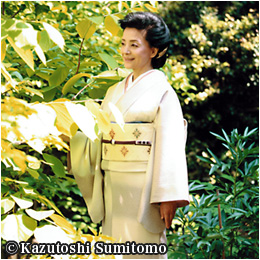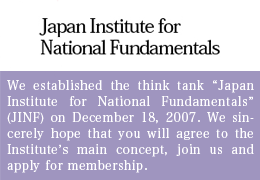CRUSHING DEFEAT OF GOVERNOR’S CAMP IN RECENT GINOWAN MAYORAL ELECTION PAVES WAY TO OKINAWA’S NEW FUTURE
On January 24, incumbent Mayor Atsushi Sakima (51), backed by the central government, defeated Keiichiro Shimura (63) in an election in Ginowan City, southern Okinawa. The election attracted nationwide attention, as it was meant to be a “proxy war” between Prime Minister Shinzo Abe and Okinawa Governor Takeshi Onaga, who is adamantly against Abe’s plan to replace the US Marine Corp Air Station Futenma in the city’s heavily populated area with a new military base in Henoko, northern Okinawa.
The Okinawa Times described Sakima’s performance, collecting 60% of the votes, as “an overwhelming victory.” With the planned return to the city of the land Futenma occupies and the transfer to Henoko generally viewed as a quid pro quo, the liberal daily fervently kept carrying harsh commentaries about the mayor. In view of Sakima’s comprehensive victory, however, the daily could not help but describe his win as “overwhelming.”
Like all other past elections in Okinawa, the Ginowan mayoral election represented a proxy war between the central government and Okinawa Prefecture. Vowing to do his utmost to prevent the transfer of Futenma Air Station to Henoko, Onaga campaigned hard every day to lend his support to Shimura, sometimes spending as many as ten hours a day on the hustings, according to the Asahi Shimbun (morning edition, January 25, 2016).
Ishigaki City Mayor Yoshitaka Nakayama had this to say about the election:
“I believe Onaga failed to carry his point because of the stubborn policy he pursued which made many voters feel his sole purpose was to have a showdown with the central government over Futenma. It ought to be the mayor’s responsibility to implement an early and smooth transfer of the air station and safeguard the security of the areas around the base. Onaga’s posture, which struck many as an attempt to take the ‘Futenma issue’ as hostage in negotiations with the government, did not hold up with voters who were eager for a rational resolution of the delicate problem.”
Conspicuous in the analyses of Sakima’s victory by the Japanese press is the view that Sakuma was victorious because the Liberal Democratic Party (LDP) and the junior coalition party Komeito went all out to dredge up votes in his favor. But could it in fact have been that a so-called “communist factor” designed to give Shimura support turned out to work to Sakima’s advantage?
Ms. Miki Fuchibe, Deputy Chairperson of the Okinawa Association of Corporate Executives, observed:
“On the day Sakima started his campaign, his election headquarters attracted far less supporters than the opposition camp. Meanwhile, a big wave of communist-controlled campaigners came roaring in to Shimura’s headquarters. The vastness of the number of campaigners was plainly visible, but not the opposition camp’s finances. And yet, it was obvious that considerable funds must have come from the Japan Communist Party. I have a feeling that this reality aroused Komeito to engage in vigorous activities to support Mayor Sakima. Another factor that significantly contributed to the mayor’s victory was the last-minute decision by lower house member Mikio Shimoji from Okinawa to pledge support for Sakima. Doing so may not quite have been his true intention, as he left the LDP in 2012 because he objected to the government party forming a joint front with Komeito as regards Okinawa-related matters. Toshihiro Nikai, an LDP heavyweight, is believed to have persuaded Shimoji to back Sakima. Since Shimoji is said to control an estimated 3,000 votes in Ginowan, winning his support affected the outcome of the election significantly, I think.”
I asked Sakima directly what he had to say about the election. He remarked:
“I have fortunately been reelected thanks to the support of a broad range of people. The LDP and Komeito have given me solid support. At the same time, I feel the ‘overwhelming victory’ I managed to score this time means that not a small number of Okinawans are questioning the nature of Okinawan politics, which has wrongly created the impression that Okinawa faces only one major issue—American military bases. I have focused energy on producing visible results in reducing Okinawa’s burden from the bases. I have also consistently appealed to my people to work with me in grappling with Okinawa’s other and equally pertinent issues, such as child-rearing and our long-ailing economy.”
The US and Japanese governments have been working closely together in thrashing out the issue of American military facilities in Okinawa in an effort to improve the present situation, in which 75% of bases exclusively used by the US Forces Japan (USFJ) are concentrated in Okinawa. The plans agreed between the US and Japan require that all American military bases south of Kadena Air Base and training grounds in the northern part of Okinawa be returned to original land owners following the projected transfer of Futenma to Henoko. This will reduce from 75 to 50 the percentage of American bases concentrating in Okinawa that are exclusively used by the USFJ.
“Simultaneous Return” of All Bases Unrealistic
However, every time the two governments come up with concrete plans to return some of these bases, a wave of irrational objections surge up, particularly from the local media. These objections boil down to an assertion that “all these bases must be returned simultaneously.”
Returning these bases all at once would turn the US-Japan Security Treaty upside down—hardly acceptable to Japan in light of the precarious international situation. Unbelievably, the media as well as politicians who make such a demand absolutely fail to turn their eyes to the threat from China.
Another objection to the return of the land has to do with an economic factor. The land rent in Okinawa has risen at a far higher rate than elsewhere in Japan. Coping effectively with Okinawans who live on the land rent from the bases is another seemingly impenetrable wall that confronts the politics of the situation.
In their hearts, most Okinawans understand these circumstances. The problems pertaining to military bases in Okinawa are a tough nut to crack because reason is not the only element that governs politics. Sakima observes, taking into consideration the 21,800 citizens who voted for the opposition:
“This is something the media constantly writes about, but there is among Okinawans a feeling of being oppressed. Such a sentiment is further stirred up as the central government and Okinawa Prefecture clash bitterly over the ‘base problem’; and I feel this sentiment has become stronger, especially among the older generation. I firmly believe that my job as mayor from this point on is simply to do what I can in implementing concrete measures designed to help heal and change this sentiment of ‘Okinawans as an oppressed people.’”
Having witnessed the mayoral election this time, I have a feeling that the political atmosphere in Okinawa will undergo a sea change from this time on.
Can Opposing Camps Work Closely Together?
Of the eleven cities in Okinawa, only two—Nago and Naha—have liberal mayors, the remaining nine being run by conservatives. These nine mayors unsuccessfully supported former Governor Hirokazu Nakaima in the last gubernatorial election in 2014. Only the mayors of Nago and Naha support incumbent governor Onaga.
The crucial question about this confrontation between these two camps, pitting nine conservatives against two liberals on the mayoral level, is whether the two camps can work closely together to resolve their differences without either party being bound by ideology. I am hopeful that agreement will be reached to return the bases step by step—not all at once—and enhance Japan’s national defense capabilities under a framework of collaboration with the US forces as a means of coping effectively with the threat from China. I believe such rational measures will increasingly become mutually acceptable to both camps.
Against the backdrop of Japan’s current situation, as well as that of the whole of Asia, I am optimistic that a foundation of the foreign policy that the Abe administration envisages is being steadily formed.
In the recent presidential election in Taiwan, Tsai Ing-wen, head of the opposition Democratic Progressive Party (DPP), scored a landslide victory over her opponent Eric Chu, described as the “leading star” of the ruling Nationalist Party (KMT). Confirming the validity of a so-called “1992 Consensus” with Beijing, the KMT assumes the position that China is “one nation,” to which it claims Taiwan belongs. To recognize that the gigantic China and the little island nation across the strait, with just 2% of the Chinese population, are one is to accept Taiwan’s eventual annexation by China. The DPP has yet to affirm the “1992 Consensus.”
Given the DPP’s position, how loathsome its sweeping victory must be to China. Considering that Taiwan constitutes the center point of a so-called First Island Chain that Beijing claims, and that controlling this long chain of islands is the key to its world hegemony, the significance of the regime change in Taiwan is immeasurable.
In a news conference immediately following her victory, Ms. Tsai mentioned just one key figure in international politics—Japan’s Prime Minister Abe. Stressing that the rule of international law, freedom of navigation, and peaceful dialogue among the interested parties must be safeguarded in the South China Sea, the president-elect stated: “I have been in good communication with Prime Minister Abe of Japan.”
With the elections in both Taiwan and Okinawa producing favorable results—
both electing candidates who understand the need to control China’s aggression in the region—the winds of fortune now appear to be blowing in Japan’s favor—and against China.
(Translated from “Renaissance Japan” column no. 690 in the February 4, 2016 issue of The Weekly Shincho)








